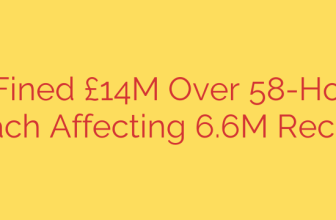
The AI Blind Spot: Why Outdated Security Metrics Put Your Cloud at Risk
The race to integrate Artificial Intelligence is on. From automating workflows to unlocking new data insights, businesses are rapidly adopting AI to gain a competitive edge. However, this breakneck speed has created a dangerous blind spot: cloud security is failing to keep pace with AI adoption.
While development teams are moving at the speed of innovation, security teams are often tethered to outdated measurement and reporting methods. This growing disconnect isn’t just a minor issue; it represents a fundamental flaw in how organizations perceive and manage risk in the AI era. The core of the problem lies in measuring what’s easy, not what’s important.
The Fundamental Flaw: Measuring Activity, Not Effectiveness
For years, security posture has been evaluated using volume-based metrics. Think about the typical security report: it’s filled with numbers like patches deployed, vulnerabilities scanned, or firewall alerts blocked. While these metrics provided a baseline in a more static IT environment, they are dangerously inadequate for the dynamic, complex world of AI and cloud computing.
These traditional metrics focus on defensive activity, not on security outcomes. They tell you how busy your security team is, but they don’t tell you if your critical assets are actually secure against modern, sophisticated threats. An organization can have a perfect score on its patching compliance and still be completely vulnerable to an AI-driven attack that exploits logical flaws or manipulates data inputs.
This reliance on outdated metrics creates a false sense of security. Executives see reports filled with “green” checkmarks and assume all is well, while sophisticated new risks introduced by AI go unmeasured and unmitigated.
New AI Threats That Old Metrics Can’t See
Generative AI and Large Language Models (LLMs) don’t just introduce new versions of old threats; they create entirely new attack surfaces. Your legacy security playbook is simply not equipped to handle them.
Key risks that are invisible to traditional metrics include:
- Prompt Injection: Attackers can use malicious inputs to manipulate an LLM’s output, tricking it into bypassing security filters or revealing sensitive information. A simple vulnerability scanner won’t detect this.
- Data Poisoning: The integrity of an AI model depends entirely on the data it was trained on. Attackers can intentionally feed a model with corrupted or malicious data, compromising its decisions and outputs in subtle but devastating ways.
- Model Theft: Proprietary AI models are incredibly valuable intellectual property. Adversaries can use sophisticated techniques to reverse-engineer or steal these models, eroding a company’s competitive advantage.
- Sensitive Data Exposure: When employees use internal or public LLMs, they may inadvertently input confidential company data, trade secrets, or customer PII. This data can then become part of the model’s training set, creating a massive and irreversible data leak.
Focusing on server patch levels while ignoring these new, intelligent threats is like locking the front door while leaving the windows wide open. The threat landscape has fundamentally changed, and our methods for measuring security must evolve with it.
Actionable Steps: Modernizing Your Security Strategy for AI
To close this dangerous gap, organizations must shift their focus from volume-based activity to risk-based outcomes. It requires a new way of thinking and a new set of metrics that accurately reflect the AI threat landscape.
Here are four essential steps to modernize your cloud security posture:
Adopt a Threat-Centric View: Stop counting alerts and start modeling real-world threats. Use frameworks like the MITRE ATLAS (Adversarial Threat Landscape for Artificial-Intelligence Systems) to understand and prioritize AI-specific attack techniques. Your goal should be to measure your resilience against these specific, credible threats, not just your compliance with a generic checklist.
Measure Time-to-Detection and Response: In the age of AI, speed is everything. The most critical metric is not how many attacks you block, but how quickly you can detect and contain a breach when it inevitably occurs. Focus on reducing your Mean Time to Detect (MTTD) and Mean Time to Respond (MTTR) for AI-related incidents.
Implement Continuous Validation: AI systems are not static. They are constantly learning and changing, meaning their security posture is also in flux. Implement automated tools and “red team” exercises that continuously test your AI models and cloud infrastructure against the latest attack vectors. This provides a real-time view of your security effectiveness, not a point-in-time snapshot.
Foster Collaboration Between Security and Data Science: Security can no longer be a siloed function. Your security team must work hand-in-hand with the data scientists and developers building the AI models. Embed security principles directly into the MLOps (Machine Learning Operations) lifecycle from the very beginning. This “shift-left” approach ensures that security is built-in, not bolted on as an afterthought.
The AI revolution is here, and it offers immense potential. But realizing that potential safely requires a paradigm shift in how we approach cloud security. It’s time to abandon the vanity metrics of the past and embrace a modern, threat-informed strategy that protects your organization’s most critical assets in this new and challenging landscape.
Source: https://datacenternews.asia/story/ai-adoption-outpaces-cloud-security-as-leaders-rely-on-old-metrics








